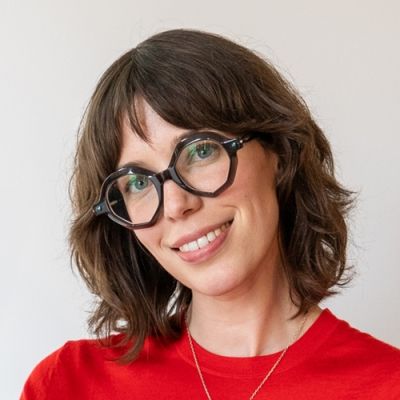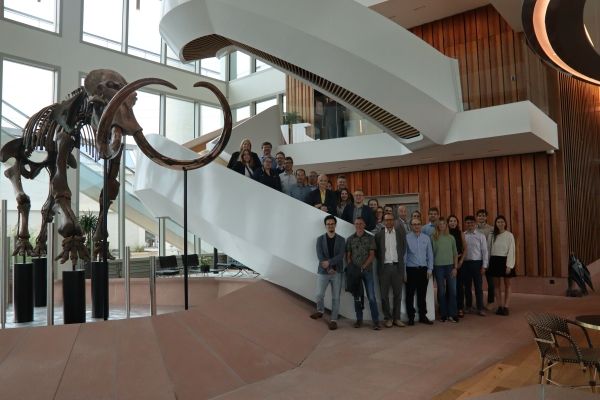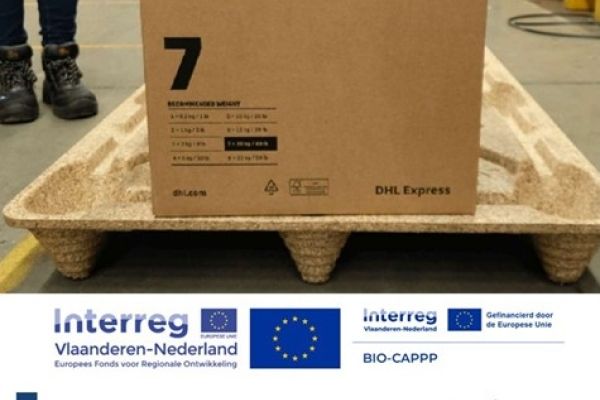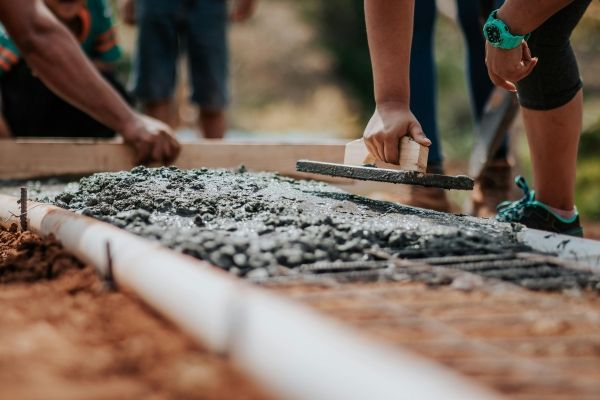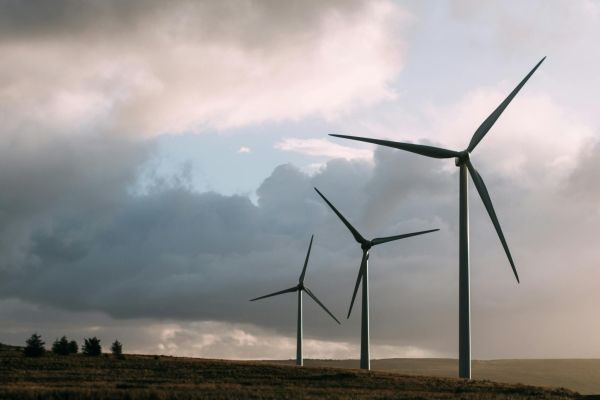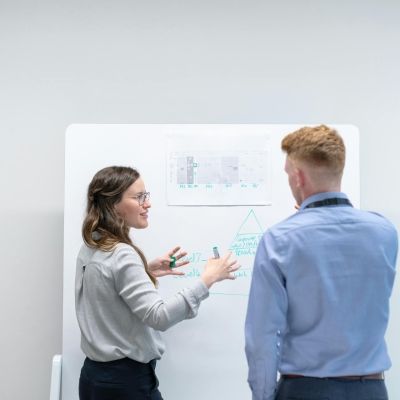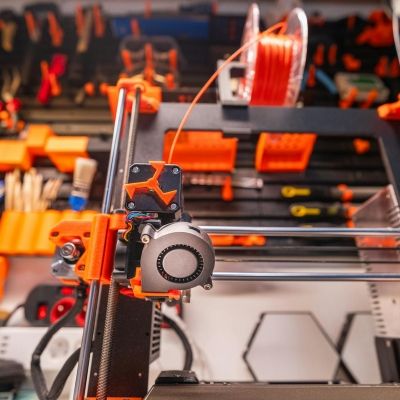CEvaluator gives a free insight into funding viability for 'circular'
VITO has developed a web-based tool that can offer businesses and investors a more solid foundation for the funding of circular projects, initiatives and business models. ‘We were seeking a balance between an easily accessible instrument and a nuanced, data-rich tool.’

Funding, an important lever in the circular transition
A sustainable economy is also largely a circular economy. But the transition to get there is easier said than done. Not least because such a transition cannot succeed without adequate funding. This is where it often stalls today. ‘We notice that investors and financiers sometimes get cold feet,’ says Anse Smeets of VITO. ‘Practically all financiers work and decide on the basis of risk models. Particular to this is that what is unknown is often deemed to be “high risk”. And there are plenty of uncertainties when it comes to circularity.’ It was no coincidence that Flanders Circular, the public-private partnership that acts as an interchange for the circular economy in Flanders, identified funding as an important lever in the transition several years ago.
In 2019, Flanders Circular organised a third open call for new projects to give the circular economy some more oxygen. The Foundation for Future Generations, Econocom and VITO signed up and saw their Circular Impact Investing project approved. This project ran from December 2019 to September 2021 and led to the development of a new evaluation tool for both financiers and companies with circular plans. The CEvaluator tool is a checklist that maps out the circularity performance for an initiative, project or business model in an objective yet easily accessible manner. In doing so, it not only takes account of typical circular aspects such as product qand material flows, but also broader aspects of ecological sustainability and economic facets, such as assessing risks and opportunities.
Standalone, web-based version
‘Our initial idea was just to help point the way for investors in the existing range of tools for mapping out circularity, but there soon turned out to be a need for an exploratory, easily accessible screening,’ says Smeets. ‘To make one, we based it on a categorisation system developed by the Support to Circular Economy Financing Expert Group, which reports to the European Commission and of which Flanders Circular is part.’ The categorisation system developed by this European exert group is currently used as the basis for the ‘Circular economy’ section within the Commission’s taxonomy for sustainable investments, as it is known. The development of the idea to make this categorisation system interactive led to a complex result in the form of an Excel spreadsheet that users could download from the VITO website. A spreadsheet that was sadly not very user-friendly. ‘Moreover, we could only guess at the tool’s effective use (we could only see the number of downloads) and we got little feedback.’ This was why VITO choose to change tactics and develop a standalone, web-based version of CEvaluator.
The CEvaluator tool’s content consists of two major sections. First and foremost, the circularity performance for a particular project, initiative or business model is mapped out – more qualitatively than quantitatively, so without immediately assigning it a score. Smeets: ‘Based on the input data from the user, the tool checks for the extent to which a case is circular, and what aspects of circularity it covers. This could range from circular design and use to value and product recovery. It also looks at sustainability aspects such as transport. This evaluation is based on the existing European categorisation system.’
Tool asks the right questions
Opportunities are linked to every business case (otherwise companies would not be interested in them), as well as risks (which may scare off potential investors). The second section of the CEvaluator tool zooms in on those specific opportunities and risks of doing circular business. ‘These are often closely related,’ explains Smeets. ‘Better customer relations are typically something that comes about through doing circular business. But that could also mean income is more distributed over time and prefinancing is needed, which a business as well as an investor will certainly need to take account of. Our tool asks the right questions about that.’
For who?
The tool is initially intended for circular entrepreneurs (such as start-ups) and for evaluators, as they are known. The latter may be private investors or authorities issuing subsidies, as well as professional supervisors who support entrepreneurs in the transition to more circularity. For example, these could be the funding experts from FINMIX, a VLAIO (Flanders Innovation & Entrepreneurship) initiative that innovative businesses can call upon for funding advice coming from a panel of various types of public and private financiers.
A VLAIO business advisor (or a consultant) can assist in the effective use of the tool. ‘It takes around an hour to enter all the data and answer all the questions,’ says Anse Smeets. ‘We were seeking a balance between an easily accessible instrument and a nuanced, data-rich tool. How useful it is naturally depends on the specific user, and the extent to which they are familiar with and involved in circularity. But from the reactions we have received up to now, we can already conclude that the tool certainly has its value.’
Further steps
Now the development and pilot phases are over, Flanders Circular is taking over the web hosting and further co-ordination of CEvaluator from VITO.
Reviews
We contacted two organisations that have already used the CEvaluator tool: a company with circular ambitions and a bank in great support of circularity.
The tool helped map out our potential circular scale in full’
Veldeman Bedding is a family business that has been producing high-quality ‘sleeping systems’ (mattresses, divans, slats and toppers) for the Belgian and European market since 1954. ‘Sustainability is in our genes, but since 2017, we have also been doing some very practical work around circularity in the form of circular sleeping systems,’ says Valerie Veldeman, Sustainability Co-ordinator for the company in Oudsbergen.
A truly circular business model, however, demands a very structured, clear approach. This was why Veldeman Bedding recently called upon the CEvaluator tool, which the company completed along with Philip Marynissen. ‘The tool is specific enough to be able to learn from, while at the same time broad enough not to lose sight of the bigger picture,’ reports Veldeman. ‘We were already quite comfortable with circularity to a degree, but I can imagine that companies that aren’t will be surprised when they use the tool for their specific business model.’
The problem with sleeping systems is that the residual value is generally low. The tool highlighted this further. It also revealed several cases for which additional funding is needed, although this had not been obvious at first. ‘The tool helped map out our potential circular scale in full,’ says Veldeman.
Veldeman will incorporate the results of CEvaluator’s calculation, which can be downloaded in the form of a PDF file, into future credit files to persuade financial institutions to invest in the company.
‘The tool gives users an actual picture of their circular project in the long term’
Sustainability is also in vdk bank’s genes. And the bank actively conveys this. ‘As a niche player, we focus on funding sustainable, ethical business models, and the transition towards these,’ says Sven Verstraeten, Companies & Organisations Manager at vdk bank.
‘This also includes funding for green (and thus circular) assets, for which we maintain strict criteria.’
These criteria are partly based on the categorisation system and taxonomy from the European Commission (that is still in draft). Verstraeten: ‘That’s a complex job, particularly if you want to see it translated into clear language and avoid confusion of ideas. The CEvaluator helps with this, ensuring that users get an actual picture of their circular project in the long term.’
Just like vdk bank, CEvaluator maintains a rather more holistic perspective. ‘We are used to viewing business models in their totality, and not in silos as still happens too often today,’ says Verstraeten. ‘That means we don’t just focus on circularity. A shortage of process water could be life-threatening for a company, for example, not just for the circular strategy. So being circular is part of being future-proof.’



